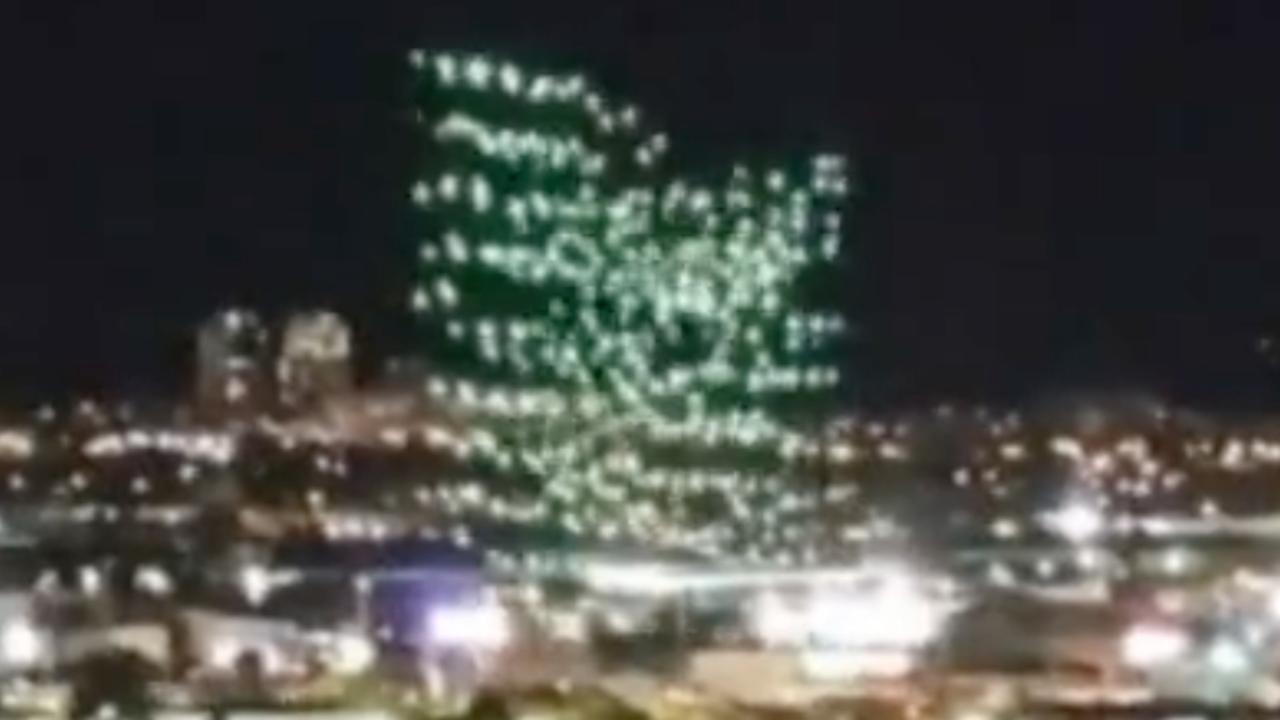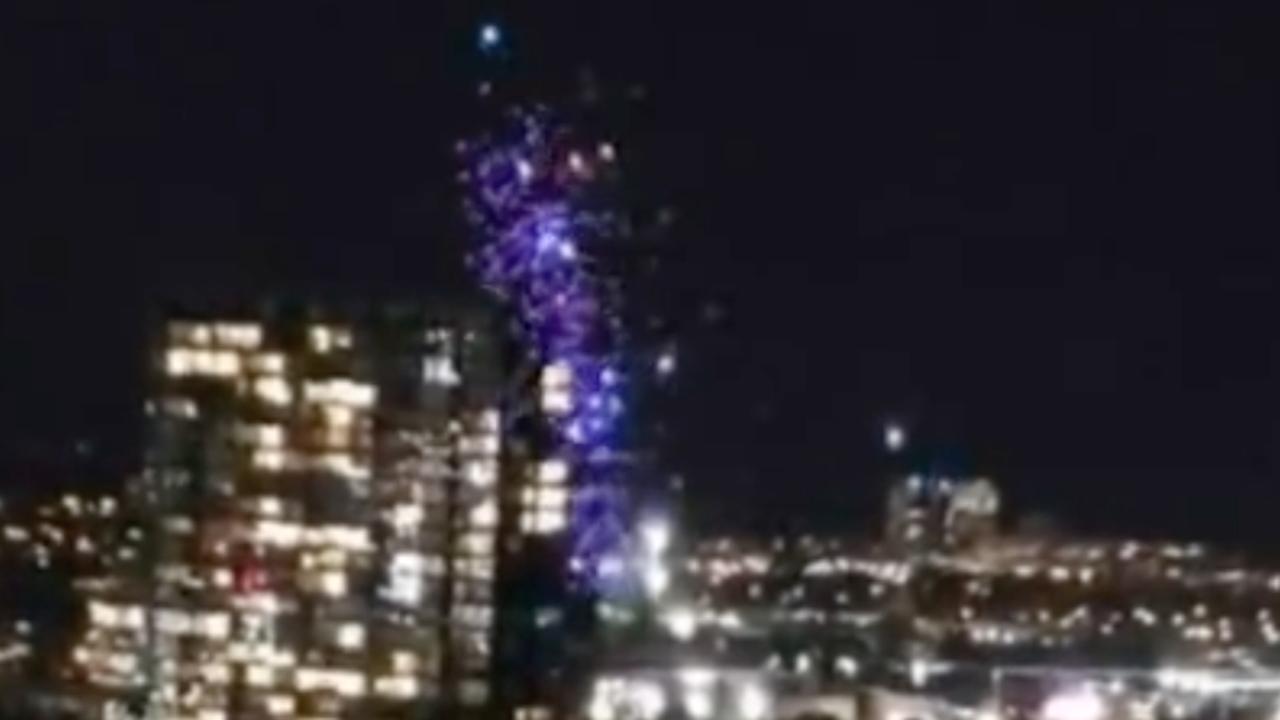Orlando Drone Show Malfunction: A spectacular drone show over Orlando took an unexpected turn when a significant malfunction disrupted the planned performance. This incident, capturing the attention of both attendees and online viewers, raises questions about safety protocols, technological reliability, and the evolving landscape of large-scale drone displays. This analysis delves into the event’s details, explores potential causes, examines public reaction, and ultimately proposes preventative measures for future drone shows.
The recent Orlando drone show malfunction, with its unexpected mid-air pauses and erratic movements, highlighted the complexities of large-scale drone displays. This incident prompts reflection on the overall safety and reliability of such events, contrasting sharply with the seemingly flawless performances often seen, such as those documented on websites like florida drone show. Ultimately, the Orlando incident underscores the need for robust technological safeguards and rigorous testing to prevent future malfunctions.
The incident involved [Company Name]’s drone show on [Date] at [Time] in [Location, Orlando]. The planned show featured [brief description of planned visuals and narrative, e.g., a choreographed light display depicting [theme]]. However, a malfunction resulted in [brief description of malfunction, e.g., several drones falling from the sky, erratic movements, etc.].
Orlando Drone Show Malfunction
This article details the malfunction of a drone show in Orlando, exploring the event’s context, the nature of the malfunction, potential causes, safety protocols, public reaction, and the subsequent impact. We will also analyze the visual aspects of the malfunction and propose preventative measures for future events.
The Orlando drone show malfunction highlights the complexities of large-scale drone operations. Such incidents underscore the need for robust safety protocols, a point further emphasized by considering the recent sophisticated drone attacks elsewhere; for instance, the ukraine drone attack on russia demonstrates both the potential and the inherent risks associated with unmanned aerial vehicles. Ultimately, lessons learned from both events should inform future drone deployments to minimize malfunctions and mitigate potential dangers.
Event Details and Context
A large-scale drone show, organized by [Company Name – replace with actual company name if known], took place on [Date] at [Time] in [Location – specific location in Orlando]. The show was planned as a spectacular light display, featuring hundreds of drones choreographed to perform a pre-programmed sequence of movements and light patterns. The intended narrative, [Insert intended narrative of the show if known, e.g., a story about space exploration, a celebration of Orlando’s history, etc.], was to be conveyed through intricate formations and vibrant color changes.
Nature of the Malfunction

During the show, a significant portion of the drones experienced a malfunction, resulting in a deviation from the planned choreography. [Number] out of [Total Number] drones were affected. The malfunction manifested as [Describe the malfunction: e.g., erratic movements, uncontrolled descent, flickering lights, loss of formation]. While some drones continued to follow the programmed sequence, the affected drones displayed inconsistent behavior, with some falling out of formation entirely.
There did not appear to be a clear pattern based on drone location or initial positioning in the formation.
Potential Causes of the Malfunction
Several factors could have contributed to the drone malfunction. Technical issues, such as software glitches within the flight control system or individual drone hardware failures (e.g., motor malfunctions, battery issues), are likely possibilities. Environmental factors, such as unexpected wind gusts or GPS signal interference from other electronic devices in the area, may also have played a role. Further investigation is needed to determine the precise root cause, but a combination of factors is more likely than a single, isolated cause.
Safety Procedures and Protocols
The safety procedures implemented before the show included [List pre-show safety checks, e.g., pre-flight drone inspections, weather monitoring, emergency response plan]. Following the malfunction, the response procedures involved [List response actions, e.g., immediate halting of the show, emergency landing procedures for affected drones, assessment of the situation].
| Protocol | Planned Action | Actual Action | Effectiveness |
|---|---|---|---|
| Pre-flight drone inspection | Thorough visual and functional checks of each drone. | [Describe what actually happened] | [Assess effectiveness, e.g., “Partially effective – some malfunctions still occurred”] |
| Weather monitoring | Continuous monitoring of wind speed and direction. Show cancellation if wind exceeds threshold. | [Describe what actually happened] | [Assess effectiveness] |
| Emergency landing procedure | Autonomous landing sequence initiated if a drone malfunctions. | [Describe what actually happened] | [Assess effectiveness] |
| Emergency response team | On-site team ready to address any incidents. | [Describe what actually happened] | [Assess effectiveness] |
Public Reaction and Media Coverage, Orlando drone show malfunction
Public reaction to the malfunction was mixed. Social media platforms saw a range of responses.
- Concern for public safety and potential damage.
- Amusement at the unexpected and somewhat comical nature of the malfunction.
- Criticism of the organizers for inadequate safety protocols.
- Speculation on the cause of the malfunction.
Major news outlets such as [List news outlets] reported on the event, highlighting the unusual nature of the malfunction and the subsequent investigation.
Impact and Aftermath
The malfunction resulted in the immediate termination of the drone show, disappointing many attendees. In the long term, the incident may affect the company’s reputation and could lead to increased scrutiny of safety protocols within the drone show industry. It also highlights the need for robust redundancy and fail-safe mechanisms in drone show technology.
A hypothetical plan to prevent similar incidents would include more rigorous pre-flight checks, redundant communication systems, improved weather monitoring, and the incorporation of fail-safe mechanisms to allow for graceful degradation of the show in case of partial malfunctions.
The Orlando drone show malfunction highlights the complexities of large-scale aerial displays. Considering the meticulous planning required, it’s interesting to compare this to the seemingly simpler, yet equally reliant on precise technology, cobequid pass camera which, while stationary, still demands reliable operation. Ultimately, both scenarios underscore the importance of robust systems and thorough testing to prevent malfunctions and ensure a successful outcome.
Visual Representation of the Malfunction
Initially, the drones performed their synchronized movements flawlessly. Then, a section of the formation began to exhibit erratic behavior. Individual drones deviated from their programmed paths, moving in unpredictable directions. Their lights, previously coordinated in a vibrant display, began to flicker and change erratically, some even switching off entirely. The affected drones descended unevenly, some making controlled landings while others drifted erratically before landing.
The visual progression went from a precise, mesmerizing display to a chaotic scattering of lights and erratically moving drones, eventually culminating in a complete halt to the show.
The Orlando drone show malfunction serves as a stark reminder of the inherent risks involved in large-scale drone operations. While technological advancements continue to push the boundaries of what’s possible, rigorous safety protocols and contingency planning remain paramount. A thorough investigation into the root cause of this malfunction, coupled with the implementation of improved safety measures and proactive risk mitigation strategies, are crucial to ensuring future drone shows are both spectacular and safe.
The incident highlights the need for ongoing dialogue between industry professionals, regulatory bodies, and the public to address these challenges and foster responsible innovation in the field of drone technology.
FAQ Explained: Orlando Drone Show Malfunction
What was the estimated cost of the damage caused by the malfunction?
Precise figures on the financial impact are not yet publicly available. Estimates would depend on factors like drone repair/replacement costs, potential legal liabilities, and any lost revenue.
Were there any injuries reported as a result of the malfunction?
Reports indicate no injuries to the public or show personnel as a result of the malfunction.
What specific type of drones were used in the show?
This information is not yet publicly available. Further investigation may reveal the specific make and model of the drones involved.
What regulatory bodies are investigating this incident?
This would depend on the local and national regulations governing drone operation. Relevant aviation authorities and possibly local law enforcement agencies may be involved.

